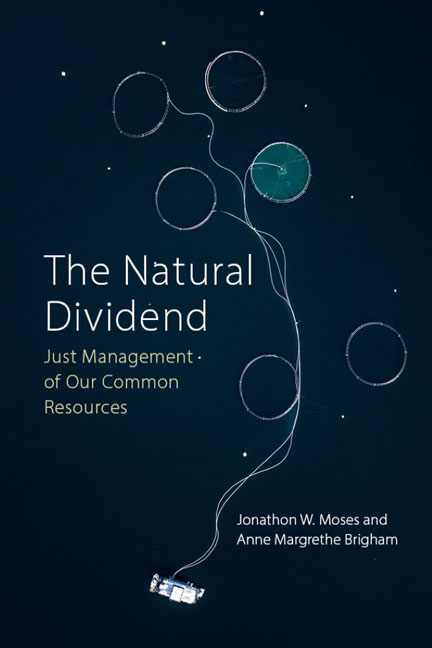Book contents
- Frontmatter
- Dedication
- Contents
- Acknowledgements
- Abbreviations
- 1 Introduction
- 2 Who owns the sun?
- 3 The Natural Dividend
- 4 The earth: the market for land
- 5 The sea: the market for salmon
- 6 The sky above: the market for renewable energy
- 7 The earth beneath: the market for fossil and mineral resources
- 8 A common market? The market for global resources
- 9 Conclusion
- References
- Index
6 - The sky above: the market for renewable energy
Published online by Cambridge University Press: 20 January 2024
- Frontmatter
- Dedication
- Contents
- Acknowledgements
- Abbreviations
- 1 Introduction
- 2 Who owns the sun?
- 3 The Natural Dividend
- 4 The earth: the market for land
- 5 The sea: the market for salmon
- 6 The sky above: the market for renewable energy
- 7 The earth beneath: the market for fossil and mineral resources
- 8 A common market? The market for global resources
- 9 Conclusion
- References
- Index
Summary
One of the most exciting and rapidly developing resource markets is the one for renewable energy (RE). This market is remarkably varied and broad, as it draws from a number of competing natural resources and technologies – many of which lie at the heart of the phenomenal transformations taking place across the global energy system. For this reason, the market for RE attracts a great deal of attention from policy-makers, academics and entrepreneurs. The enthusiasm and interest are exciting, but it is also important to place these developments in a larger context: RE still accounts for a remarkably small share of the world's primary energy consumption.
Because these markets are in transition, we can expect our current regulatory focus to change as the resources and technologies mature and become more competitive. Today, most regulatory attention has been aimed at supporting infant technologies and markets, so that they can better compete with more traditional (dirty and non-renewable) forms of energy.
The contemporary market for RE is dominated by three natural resources (water, wind and solar) and several underlying technologies (e.g. turbines, photovoltaic [PV] devices, concentrated solar power [CSP] furnaces, etc.). Globally, RE resources were able to generate an impressive 2,537 gigawatts (GW) in 2020 (International Renewable Energy Agency [IRENA] 2020: 1). As shown in Figure 6.1, hydropower (at 1,190 GW) makes up almost half the existing RE capacity in the world today, while the other half – roughly – comes from wind and solar energy.
Here we focus on the energy produced by the wind and the sun. There are three reasons for this particular focus. First, and foremost: wind and solar energy are remarkably special and attractive. These unique traits are elaborated upon in the section that follows, but for now we can note that these resources are ubiquitous, apparently free for the taking, clean (pollution-free) and renewable. For all these reasons, there has been a significant effort by political authorities to stimulate the production of wind and solar energy – i.e. to shift consumption from non-renewable to renewable sources of energy.
This effort has been propelled by a number of national and international initiatives. Indeed, by the end of 2020 nearly every single country in the world had some form of renewable energy support policy, albeit at varying level of ambition and effectiveness (REN21 2021
: 18).
- Type
- Chapter
- Information
- The Natural DividendJust Management of our Common Resources, pp. 139 - 172Publisher: Agenda PublishingPrint publication year: 2023

